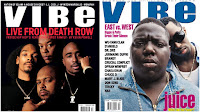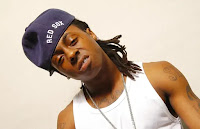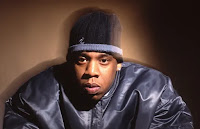CoreDJRadio
The NETWORK for The Core DJ Syndicated Radio Show
The Core DJ's on Spotify
@OfficialCoreDJs
Events
-
The Core DJ's Retreat 36 Las Vegas (Live from the Strip)
April 23, 2024 to April 26, 2024 – The LINQ Las Vegas Hotel + Experience
https://Core26LasVegas.eventbrite.com #Core36LasVegas registration is OPEN now! (DJ's, artist, labels) all press, inbox the CoreDJsWorldWide instagram please (please REGISTER in the COR…
Organized by The Core DJ's | Type: conference
0 Comments 1 Like
Top Blog Posts
Latest Activity
Videos
Birthdays
Notes
[BRAND NEW] B∆K∆BO¥Z | CLUB GO CRAZY (DJ PACK) #PartyStarter @TheBakaBoyz #SuppottTheDJ
Created by The Core DJ's Jul 6, 2014 at 4:25pm. Last updated by The Core DJ's Jul 6, 2014.
Notes Home
Welcome! To view all notes, click here. Continue
Created by The Core DJ's Jul 6, 2014 at 4:18pm. Last updated by The Core DJ's Jul 6, 2014.
Key Moments In Hip-Hop History
Hip hop is more than music; it’s a cultural movement that incorporates different elements of art. Before there was Lil Yachty, Young M.I.A., or YNW Melly, there was a world of hip hop artist who's name rain supreme even still today.
Back when music was real, artist had the opportunity to shine in their own distinctive way. Rap is one of the most distinctive features of hip-hop. Rappers use rhythm, lyrics, and vocal tone to express themselves. The best rappers are distinguished by their “flow” – the way the words run together without the performer getting tongue-tied.
Take this journey with me into the world of hip hop as we define all the odds to our culture. Note: When I mention hip hop, I don't mean rap music. They do not fit into the same category as each other.
While often used to refer to rapping, “hip hop” more properly denotes the practice of the entire subculture. The term hip hop music is sometimes used synonymously with the term rap music, though rapping is not a required component of hip hop music; the genre may also incorporate other elements of hip hop culture, including DJing, turntablism, and scratching, beatboxing, and instrumental tracks.
 Have to give credit were its due. Master P took advantage of music marketing during his time. Every time you pick up a tape in the stores, inside the cover had 6 more albums coming out!
Have to give credit were its due. Master P took advantage of music marketing during his time. Every time you pick up a tape in the stores, inside the cover had 6 more albums coming out! Hip hop had a little more of a aggressive approach during the early 90's. Rap groups were crossing over into making a mixture with hip hop groups like Wu-Tang Clan, Kriss Kross, and solo acts such as Nas, Ice Cube, Will Smith, and L.L. Cool J.
Hip hop had a little more of a aggressive approach during the early 90's. Rap groups were crossing over into making a mixture with hip hop groups like Wu-Tang Clan, Kriss Kross, and solo acts such as Nas, Ice Cube, Will Smith, and L.L. Cool J. During that time, hip hop magazines were at there prime. Many fans received their music news from sources like Vibe or Source Magazines. Black entrepreneurs were also launching clothing brands for urban America such as Sean Jean, Pelle Pelle, Karl Kani, Southpole, and Phat Pharm.
During that time, hip hop magazines were at there prime. Many fans received their music news from sources like Vibe or Source Magazines. Black entrepreneurs were also launching clothing brands for urban America such as Sean Jean, Pelle Pelle, Karl Kani, Southpole, and Phat Pharm. The music industry was about to change in a major way once No Limit Records, Ruff Ryders, and Cash Money hit the scene. They introduced the life of a "Stunner" and how to be "Bout It Bout It."
The music industry was about to change in a major way once No Limit Records, Ruff Ryders, and Cash Money hit the scene. They introduced the life of a "Stunner" and how to be "Bout It Bout It." Although the two record companies would continue to make music, rap was slowly being stripped from mainstream entertainment. Artist like Ja Rule, Eminem, and Nelly brought a style of flavor that took storm on radio stations and beyond.
Although the two record companies would continue to make music, rap was slowly being stripped from mainstream entertainment. Artist like Ja Rule, Eminem, and Nelly brought a style of flavor that took storm on radio stations and beyond. Rap was about to make its comeback into hip hop. New York and Texas was pumping rappers left to right. Jay-Z was there the whole time, but now new faces such as 50 Cent, Mike Jones, Missy Elliott, Kanye West, The Neptunes and Slim Thug was creeping into the industry.
Rap was about to make its comeback into hip hop. New York and Texas was pumping rappers left to right. Jay-Z was there the whole time, but now new faces such as 50 Cent, Mike Jones, Missy Elliott, Kanye West, The Neptunes and Slim Thug was creeping into the industry.Tags:
Replies to This Discussion
© 2024 Created by The Core DJ's.
Powered by
![]()
